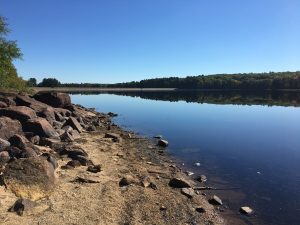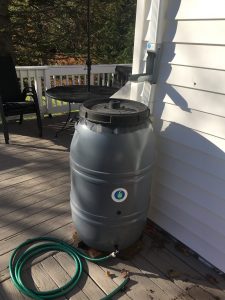What You Can Do Now About Water


Water conservation and community action can help protect Hopkinton’s water supply amidst ongoing drought.
At Home:
- Be a good neighbor. Obey all town water bans whether you are a private well owner or on municipal water.
- Conserve water (see tips inside brochure).
- Test your well water regularly. For more information, visit Hopkinton Board of Health at: http://www.hopkintonma.gov/home/government/boards/boh
In Your Neighborhood:
- Spread the word. Talk to your neighbors and friends about conserving water.
- Report repeated water ban violations to the DPW, 66 Fruit St., 508.497.9765, Eric Carty, Water/Sewer Superintendent ericc@hopkintonma.gov.
- Find and share information posted on eHop’s website: www.ehop.org/tag/ehop-spotlight/
- Follow @ehop01748 on Facebook, Twitter, Instagram and LinkedIn.
Hopkinton DPW Water Conservation Tips:
Around Town:
- Help shape town water policies. Reach out to key leaders and participate in board/committee meetings.
- If you want to change the water ban penalties, petition a warrant for Town Meeting using the Guide for Citizen Petitioners found on the town website.
- Provide input into Hopkinton’s Master Plan. The Master Plan is a blueprint for physical growth and future development. It includes goals and recommendations for Land Use, Natural and Cultural Resources, Housing and Economic Development, Community Facilities and Services and Transportation.
- Master Plan public hearing on November 21 at 7:35 PM at Town Hall
- Email feedback to the Dept of Land Use, Planning & Permitting, contact: Elaine Lazarus, Director of Land Use and Town Operations, elainel@hopkintonma.gov, 508.497.9700.
- The Master Plan draft is posted on the Planning Board page.
Ways to Conserve Water
Outdoors:
- When lawn watering is allowed, water early in the morning before sunrise when temps and wind are down. Don’t water between 9 – 5 pm. Water once every 5 – 7 days – that’s all that a lawn needs.
- Turn auto-sprinklers to off setting and manually control them. They should not be set to auto. Check positioning and operation of all sprinkler heads (so they’re not watering pavement). Make sure heads aren’t leaking.
- Install a rain sensor device on auto-sprinklers that will adjust the irrigation cycle on the sprinklers when adequate rainfall happens.
- Raise lawn mower blade to at least 3 inches. Longer grass holds moisture and shades the soil.
- Use a kitchen timer to remind yourself to turn off sprinklers.
- Choose native plants or plants that need less water. Minimize areas of grass.
- Group plantings according to water needs to maximize efficiency of irrigation. Use mulch to reduce evaporation.
- A hose left running wastes 6 gallons per minute.
- Collect water in trash barrel from downspout under your gutters. Then take watering can to dip in and water your plants.
- Turn off and drain the water supply to your outside faucets during the winter so that they don’t freeze and split.
Indoors:
- Only use dishwasher and washing machine with full loads.
- Take shorter showers, 5 min or less.
- Fix leaking faucets, pipes, and toilets: The average US family can save 10,000 gallons of water a year by fixing leaks. Dripping faucets can waste 20 gallons per day.
- Turn off the faucet when brushing your teeth and save 200 gallons of water a month.
- A leaking toilet can waste 200 gallons per day. Check your toilet. Toilets are the number one culprit for water loss in the home and waste an incredible amount of water. Check for leaks by putting food coloring in the tank and waiting a half hour. If the water changes color in the bowl, you have a leak.
- Avoid using your toilet as a waste basket. Every flush takes 2 – 7 gallons of water.
- Put a brick in your toilet tank to save a gallon of water per flush.
- If you have an older 6 gallon per flush toilet, think about replacing it with the new efficient 1.6 gallons per flush toilet.
- Buy front loading washing machines and save over 40% in water consumption.
- Create a kitchen compost bin as an alternative to using the garbage disposal.
- Collect and reuse clean household water (water running while you wait for the shower to get hot, leftover water from cleaning veggies, etc).
- Every time you rinse a milk jug, don’t pour it down the drain, use it to water potted plants. Water with a little milk makes great fertilizer.
- Tips for Saving Water from DCR
Who Can Help?
Ask Questions.
Get Involved.
Overseeing our water-related concerns takes a team effort. Use the grid below as a starting point for contact info, depending on your area of interest. For specific contact emails/phone numbers, please check the town or school department websites.


